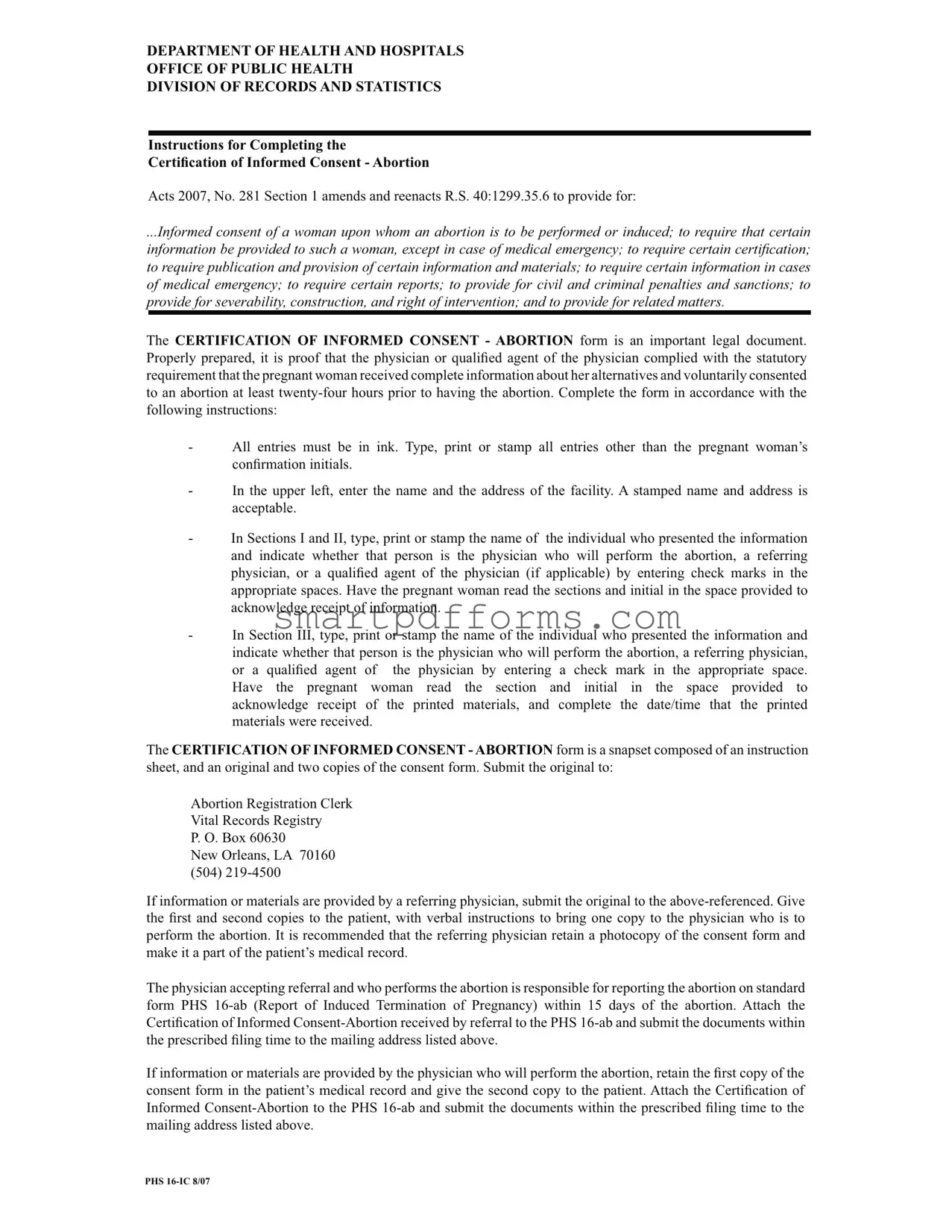The Abortion Paper form, stemming from Acts 2007, No. 281 Section 1, which amends and reenacts R.S. 40:1299.35.6, encapsulates a wide array of legal obligations and procedural requirements within the framework of the Department of Health and Hospitals, Office of Public Health, Division of Records and Statistics. This pivotal document is crafted to ensure informed consent is obtained from a woman before any abortion procedure is performed or induced, highlighting the essentiality of transparency and autonomy in healthcare decisions. Additionally, the form mandates the publication and provision of specific information and materials, aimed at fostering a well-informed decision-making process. In scenarios where a medical emergency necessitates an abortion, the form outlines distinct information requirements, underscoring the need for swift yet informed action. Beyond its role in safeguarding patient rights, the form serves as a vital legal instrument for the collection of data, requiring certain reports to be filed. Notably, it delineates civil and criminal penalties and sanctions for non-compliance, emphasizing the legal implications and the seriousness with which these matters are regarded. Furthermore, provisions addressing severability, construction, and the right of intervention are included, thus ensuring the document’s robustness and adaptability to varied legal challenges. By functioning as an integral link between legal framework and healthcare provision, the Abortion Paper form underscores a commitment to ethical standards, legal compliance, and the protection of individual rights within the medical domain.


